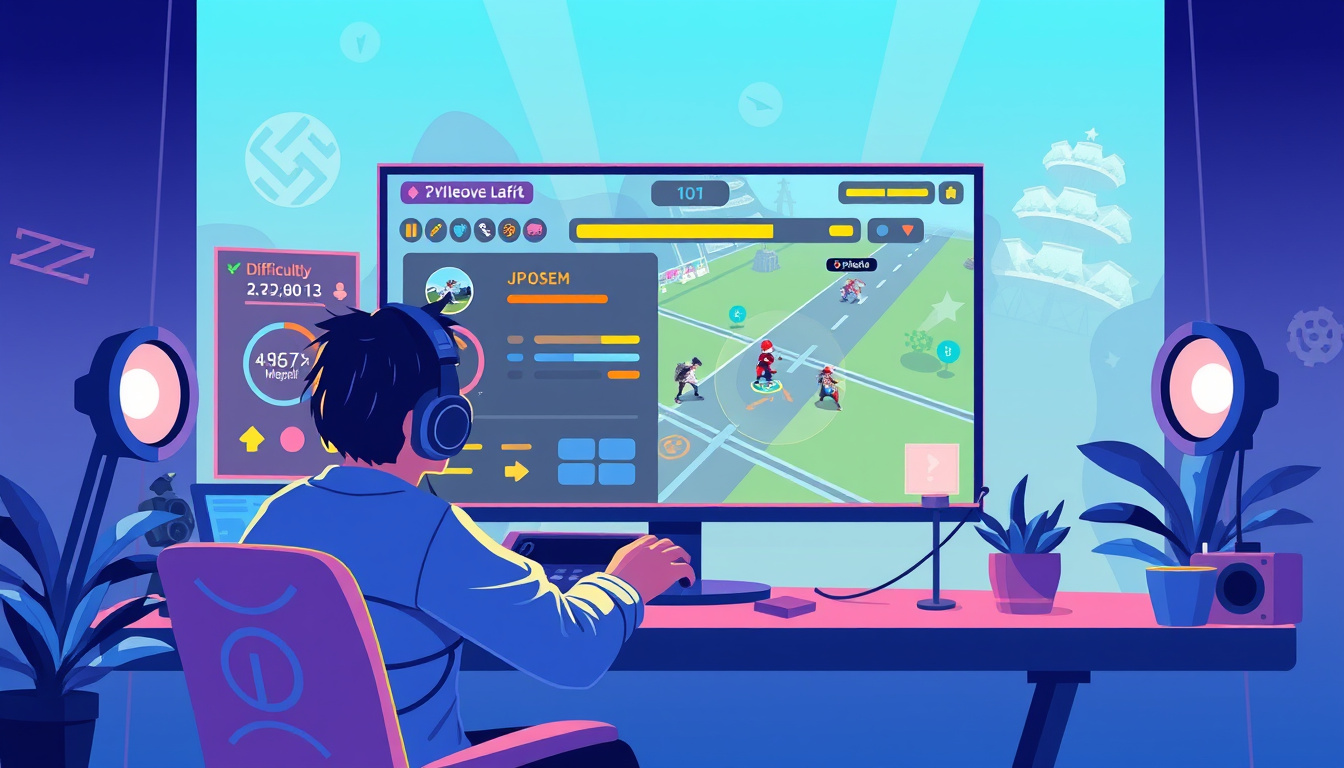Mastering the Game: How Difficulty Adjustments Transform Your Play Experience
In the realm of gaming, difficulty adjustments play a vital role in shaping the user experience and interaction with the game. Just as Bitcoin employs a dynamic difficulty adjustment mechanism to regulate block generation and maintain its monetary policy, video games utilize similar principles to ensure both challenge and enjoyment for players. This article explores the significance of difficulty adjustments in games, how they enhance player engagement, and their parallels with other systems, such as Bitcoin mining.

Understanding Difficulty Adjustments
At its core, difficulty adjustment in games refers to modifying the game mechanics or parameters to align the experience with the player’s skill level. The goal is to maintain an optimal balance where players are challenged just enough to remain engaged without becoming overly frustrated.
In video games, difficulty can be adjusted in several ways:
- Dynamic Scaling: The game automatically alters its difficulty based on the player’s performance. For example, if a player is consistently succeeding, the game may introduce tougher enemies or obstacles.
- Fixed Difficulty Levels: Players can choose from preset difficulty levels (e.g., Easy, Medium, Hard) before starting the game, allowing them to tailor the experience to their preferences.
- Adaptive Difficulty: Some games assess player behavior and adapt challenges in real-time. This ensures a more personalized experience and can help prevent players from reaching a point of boredom or burnout.
The Role of Difficulty Adjustments in Player Engagement
One of the primary purposes of difficulty adjustments is to keep players engaged and immersed in the game. If a game is too easy, players can lose interest. Conversely, if it is too difficult, frustration can lead to disengagement. Here’s how difficulty adjustments contribute to a compelling gameplay experience:
1. Enhancing Challenge
Adjusting difficulty levels helps create a sense of achievement. When players overcome substantial challenges, they experience satisfaction and motivation to continue progressing.
2. Catering to Diverse Skill Levels
Games that offer difficulty adjustments can appeal to a broader audience. Casual players may prefer an easier experience, while hardcore gamers might seek challenging modes. This inclusivity can expand a game’s reach and audience base.
3. Fostering Replayability
By offering multiple difficulty levels, games encourage replayability. Players may return to experience the game under different settings, increasing longevity and player investment.
Parallels with Bitcoin Difficulty Adjustments
Interestingly, the concept of difficulty adjustment is not unique to gaming. The Bitcoin network employs a similar mechanism to maintain a consistent block generation time despite fluctuations in mining power. Every 2016 blocks, the network evaluates the average time taken to mine those blocks. If it is shorter than the desired two-week interval, the difficulty increases; if it takes longer, the difficulty decreases. This system mirrors how games can adjust their challenges based on how efficiently players are tackling objectives.
How Bitcoin’s Mechanism Works:
- Consistency: The Bitcoin difficulty adjustment ensures that blocks are mined consistently approximately every ten minutes, maintaining the release schedule of new coins.
- Market Relevance: Just as games respond to player skill, Bitcoin’s adjustment keeps pace with technological advancements in mining, ensuring that the system remains fair and competitive.
Implementing Difficulty Adjustments in Game Design
For developers, implementing effective difficulty adjustments entails careful consideration of several factors:
-
Player Feedback: Gathering data on players‘ experiences and challenges can help inform adjustments, leading to a more polished gameplay experience.
-
Algorithmic Approaches: Utilizing algorithms that analyze player performance can automate adjustments, creating a fluid and responsive gaming experience.
-
Balancing Challenge and Reward: It’s crucial to maintain a balance where the difficulty adjustment enhances the challenge but also provides meaningful rewards for achievements.
Conclusion
Difficulty adjustments are essential in both gaming and systems like Bitcoin, providing a framework that balances challenge and accessibility. By understanding and implementing effective difficulty management strategies, game developers can create engaging experiences that cater to a wide range of player skill levels. As the gaming landscape continues to evolve, the role of difficulty adjustments will remain pivotal in shaping satisfying and immersive play experiences.
